
What is the MyCareLink Relay home communicator?
The MyCareLink Relay home communicator sends data from your heart device directly to your clinic using Wi-Fi or cellular data. The MyCareLink Relay home communicator is compatible with Bluetooth®-enabled devices.
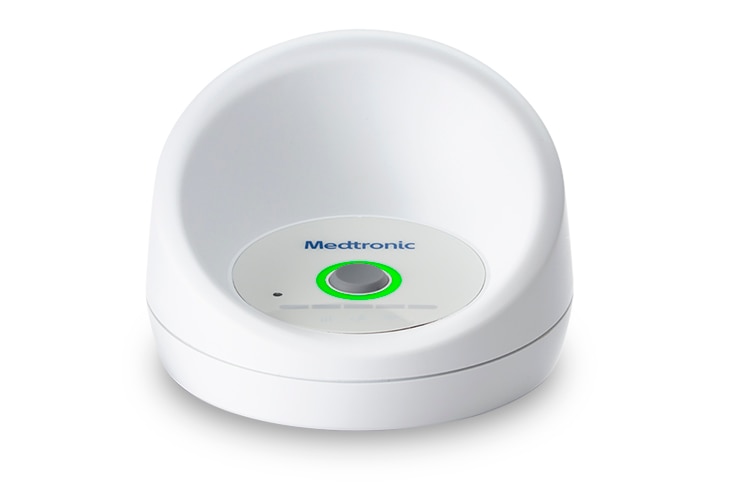
Choose between Wi-Fi or cellular connection
MyCareLink Relay home communicator users can choose to utilize Wi-Fi to ensure a robust connection to their clinics. If you choose not to use Wi-Fi or your Wi-Fi stops working, your MyCareLink Relay home communicator will automatically default to a cellular connection. Wi-Fi is not required to use the home communicator.
How to connect your MyCareLink Relay home communicator to Wi-Fi
Step-by-step guide: how to connect your MyCareLink Relay home communicator to Wi-Fi
Do you have Wi-Fi?
- Before starting, you will need to have your Wi-Fi network name and password on hand.
- Medtronic recommends you set up Wi-Fi to ensure that you have a more robust connection for sending transmissions and for receiving software and security updates.
- The MyCareLink Relay home communicator will automatically default to a cellular connection if you do not use Wi-Fi or if your Wi-Fi stops working. Wi-Fi is not required to use the home communicator.
- If you need assistance, please call Stay Connected at 1-866-470-7709 (7 a.m.–7 p.m. CT, Monday–Friday).
Step 1
Plug in the power cord. If the communicator is already plugged in, unplug it and reconnect.
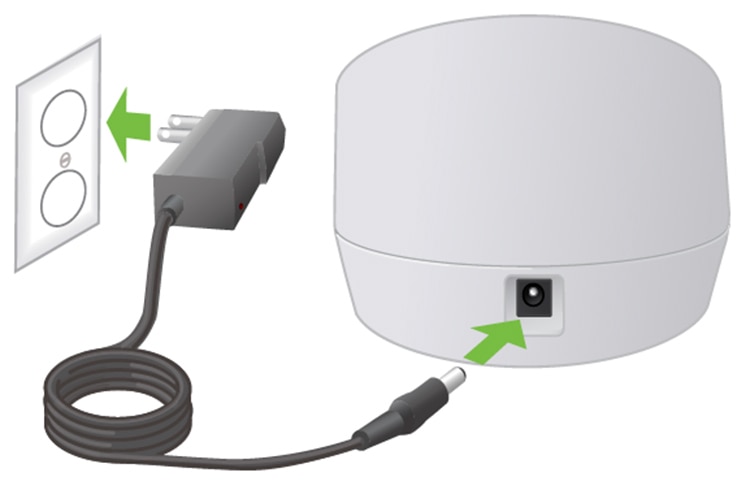
Step 2
Open the wireless network connection window on your computer and select Medtronic. Please note that it may take a few minutes for the Medtronic Wi-Fi network to appear.
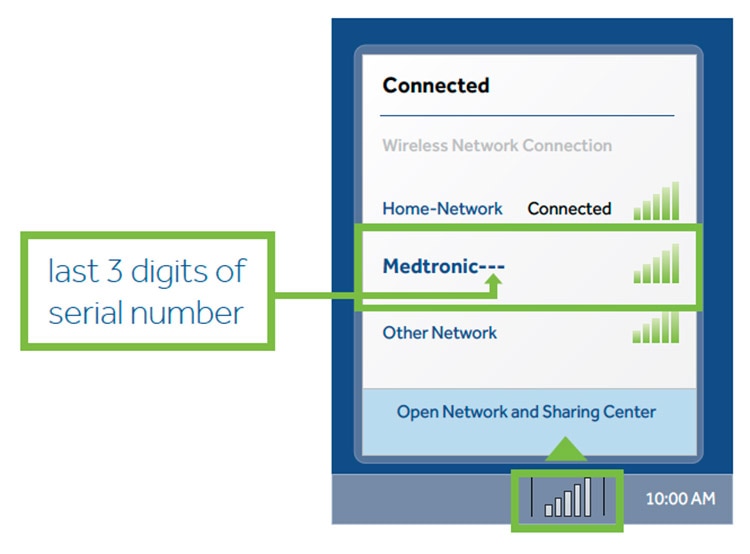
Step 3
When prompted, enter the password from the communicator label (found on the bottom of the communicator).
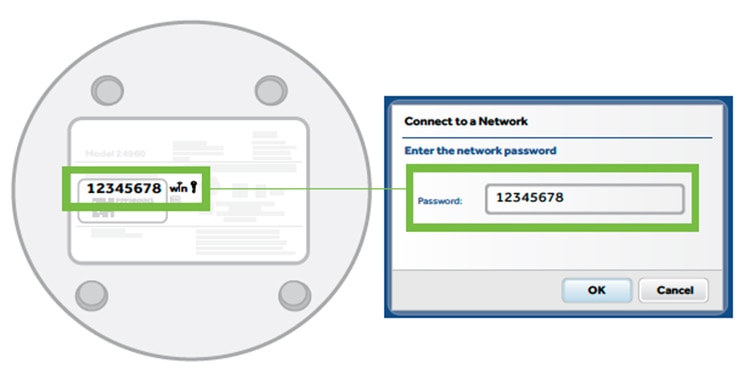
Step 4
Open an internet browser and type in http://www.MCLRelayWiFi.com and hit enter. Be sure to include “http://”.

Step 5
Select a language and click GET STARTED.
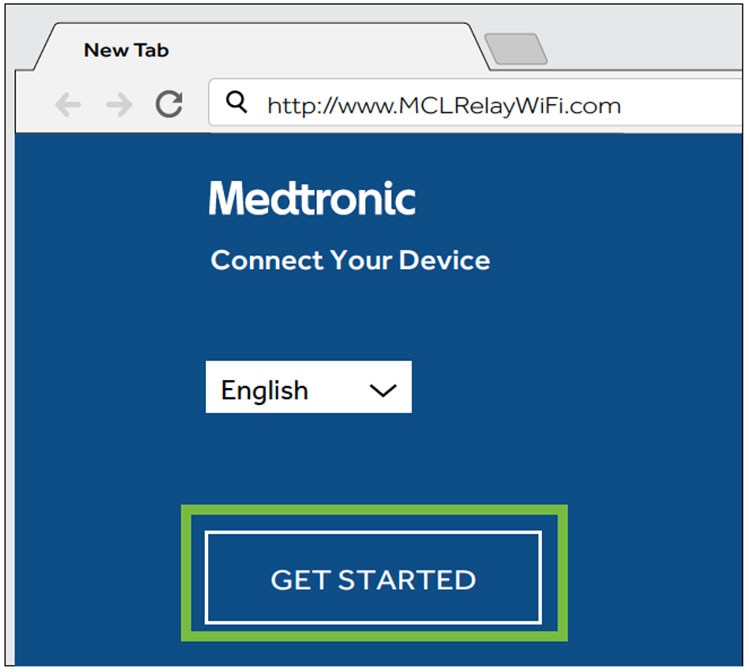
Step 6
Select your home Wi-Fi network and press CONTINUE.
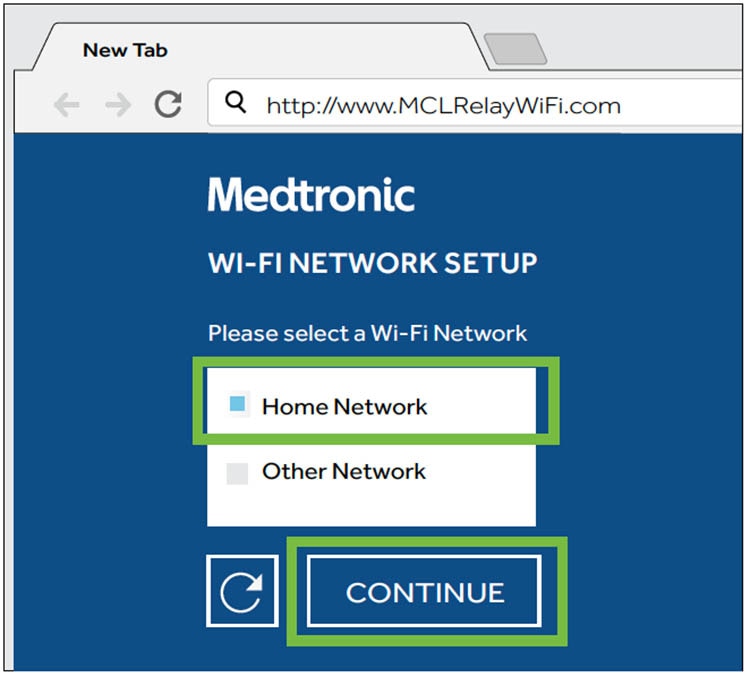
Step 7
Enter your home Wi-Fi password and press CONTINUE.
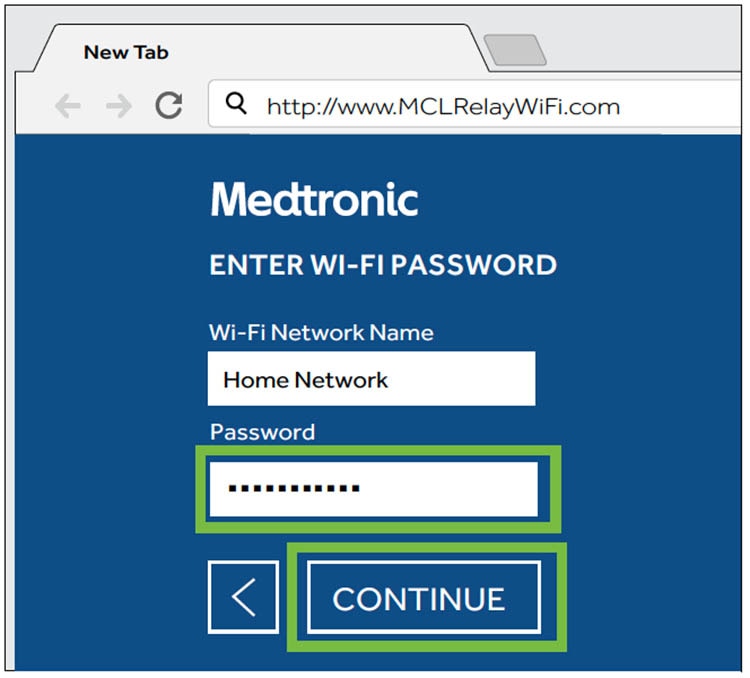
Step 8
Once you see the screen below, the communicator has successfully been connected to Wi-Fi.
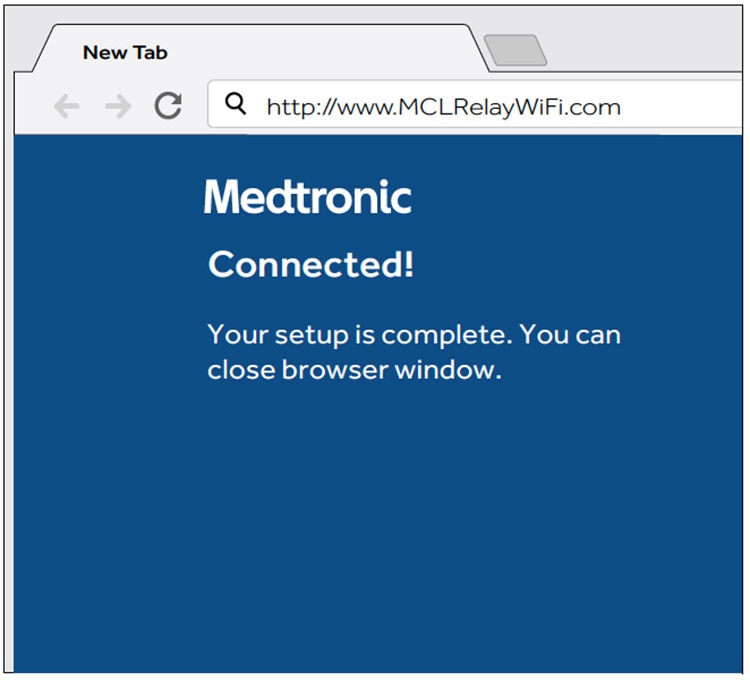
Patient resources
Questions about your monitor:
Medtronic Stay Connected
1-866-470-7709
Monday–Friday
7 a.m.–7 p.m. CT
U.S. mail:
Medtronic Heart Rhythm Patient Services
Mail Stop MVC 31
8200 Coral Sea St. NE
Mounds View, MN 55112
MyCareLink Connect™ website:
for Medtronic implanted heart devices
MyCareLinkConnect.com
The Bluetooth® word mark and logos are registered trademarks owned by Bluetooth SIG, Inc. and any use of such marks by Medtronic is under license.
Information on this site should not be used as a substitute for talking with your doctor. Always talk with your doctor about diagnosis and treatment information.
